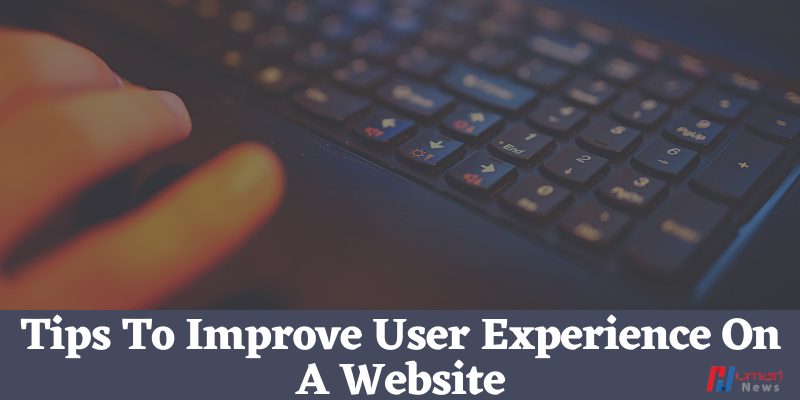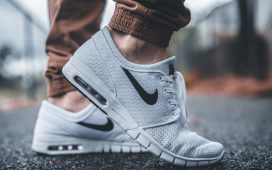In today’s marketing world, it has been quite out of date to emphasize on the importance of a website user experience. A website has become a staple for every business, be it small scale or a thriving enterprise. However, making a website alone isn’t enough; the main struggle starts when you have to pull traffic to your website and make them do all the functions that you want them to do.
Let’s start our discussion from what a good website should look like and what actually is user experience? Well, if you are making a website, these both terms (a good website and user experience) shouldn’t be counted as two different things, they both are related. If you want a good website, you have to ensure a satisfactory user experience and vice versa.
A website is said to be successful when a user’s length of stay or visit to the website is fruitful. The longer they are roaming on your website, the more they’ll get to know about your business and services. Talking about the user experience, also known as UX, is related to how users perceive your website. Their visit to your website can be delighted through usability, accessibility, efficiency, and ease on the eyes.
This is mostly accomplished by UI UX designers who are skilled in the art of garnering the user’s attention. The user interface design, usability testing (how the user uses the website), and others are some of the most basic things a UX designer will take a look at.
However, it isn’t Astro science to make your website look healthy. You need to put yourself in the shoes of the user and analyze how would you like a website to be.
Read More:
- Ways to Optimize Images For Better Loading Time
- 10 Best WordPress Plugins that you Must Use
- Qualities A Web Designer Must Have
Tips to Improve User Experience
Here are a few tips and tricks to improve user experience on a website efficiently:
Conventions are always better
You might come at me for advising to use conventions because people think conventions are a hindrance in the way of creativity. But when we are talking about user experience, it is always better to keep things about how people are used to.
It is essential to take advantage of human behaviour. Here are a few conventions that should be followed when building a website:
- Logo of the brand should be placed on the top-left corner of the website
- Navigation menu, or also known as navbar should be on the top of the page and centred or on the right side
- The website must have a search feature, and that should be placed somewhere on the top, preferably in the main header
- Most of the times, users only need a contact for the business, therefore put the contact information itself or the link to contact us page on the top of the main page as well
- Social media sharing buttons should be aligned on the right side of the home page
- Additional important yet less clicked features such as sign-up forms, sitemaps and social media links are better to be placed at the bottom of the page also known as the footer of the page
Text Matters
Yes, you heard right text that you are going to use in your website makes a huge difference. Here is what you can do to improve the readability of your website:
- Use a Sans-serif font. Fonts like Arial and Helvetica are categorised under the sans-serif, and they are recommended for digital use as they have proven to increase readability.
- Make headings your best friends. Imagine it yourself, reading a never-ending, unorganised page of content can be quite dull and eventually make users leave the page even if the information was useful. Therefore, it is better to break your content in subheadings as it will make your content look organised, and people who are on the run can still get a little information by reading subheadings only.
- Let your content breathe by making them shorter. Break your content blocks into 2-3 statements per paragraph.
- Highlight essential things in your content. Most people are used to of skimming, and highlighting, i.e., bold or italicised content can make them extract useful information without having read the full content.
You are running out of time, Keep Minimal Content
According to studies, users only take 8 seconds to analyse and make a judgement about your website. Take advantage of these 8 seconds through your UX design.
People usually land on your home page, for obvious reasons also called landing page. Therefore it is important only to add useful yet minimum content your landing page. A little know-how about the business is enough for starters. However, the tons of information can be added in the inner links of the website.
White Spaces For a Breather
Imagine a web page loaded with elements all over; we know its close to an anxiety attack. Therefore, the spaces between each element aid to better flow and visuals of the website.
White spaces, also known as negative spaces, are here to rescue for this purpose. Don’t make your website look like a trashcan, add some white spaces between elements to make it easier for users to navigate.
Add CTA’s
CTA abbreviation of Call-to-Action, are the buttons that shout their meaning. In simpler words, they provide a navigation path for your webpage.
For example, if you have a clothing website and you have launched a new collection, add a CTA button such as “Shop the collection” to direct the users immediately to the collection page.
The advantage of CTA buttons is evident from the above example, as they make user’s visit and purpose fulfilment easier.
Visuals are still ruling the trend
Adding animations and pictures can keep your users interested more than words. Incorporate relevant and attractive, high-quality images to your website to give oomph to the aesthetics.
However, keep in mind that you are not overdoing it. Nobody likes a flash of rainbows striking their eyes whenever they visit your website. Keep a balance!
Listen to People’s Needs
Once you have built the website, it’s time for optimisation. Keep a keen eye on what people are liking, disliking, and how do they navigate throughout their visit to your website.
One conventional way is to ask the feedback from the users, but how many feedback forms have you ignored yourself and yet you are thinking to throw one at your users. Try something new!
Scroll Maps
And that new is, Scrollmaps. Scroll maps can help you view how your users scroll, navigate and click on your website. Furthermore, it distinguishes between the hotspots of your websites and the spaces that people usually scroll away from. However, you can improve the unsatisfactory areas accordingly.







